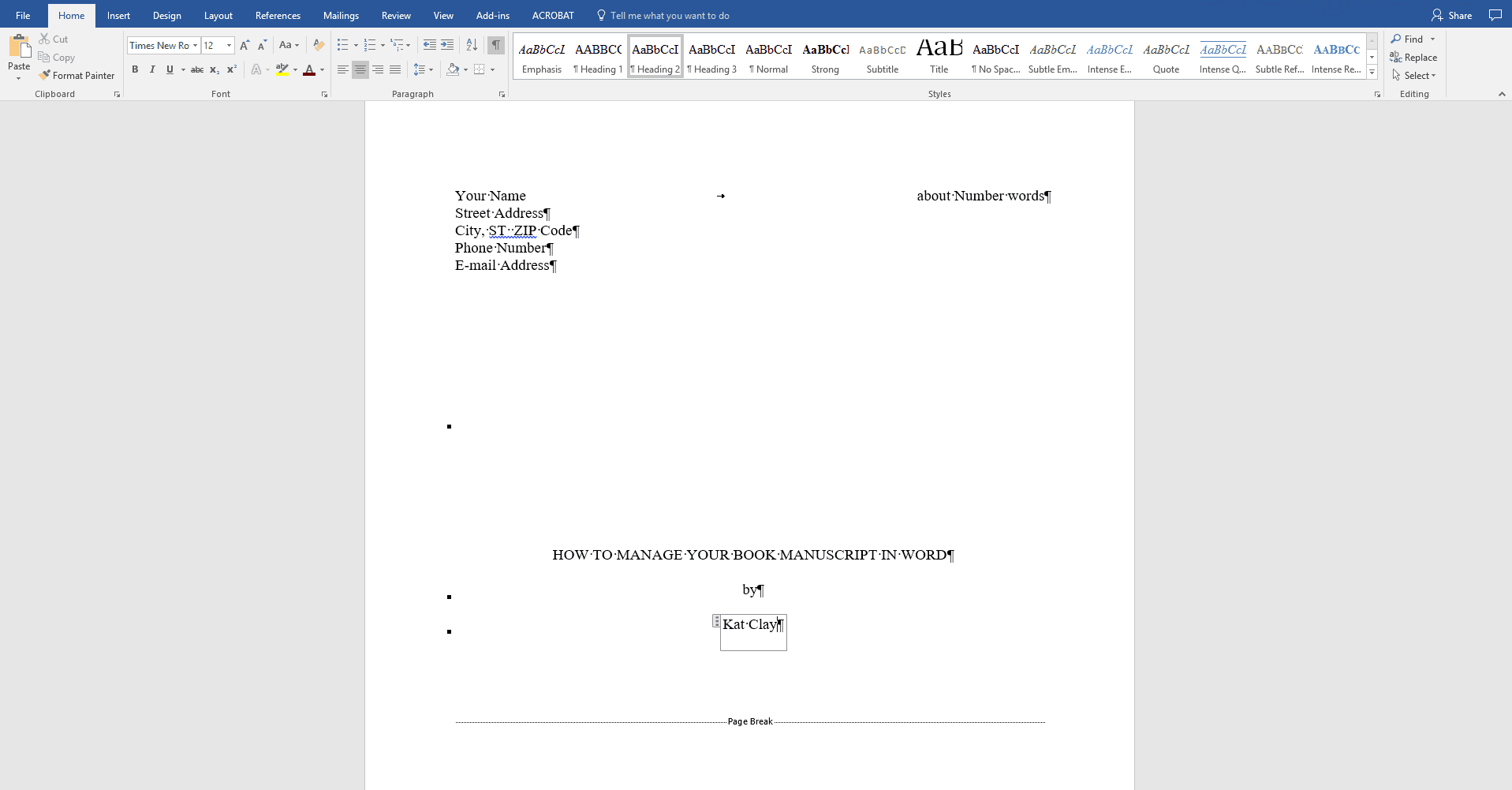

- #MANUSCRIPT FORMAT PROFESSIONAL#
- #MANUSCRIPT FORMAT DOWNLOAD#
- #MANUSCRIPT FORMAT FREE#
If I get to page twenty and I haven’t yet gotten a glimmer of what’s at stake for Our Hero/ine, then I know there’s a problem. “When mss follow a consistent format, it helps me assess the pacing. “I’m reading (as are all other agents and editors) a LOT of manuscripts,” she said. The other day I was reading a blog post by agent-blogger Janet Reid (of Query Shark fame), who had some interesting things to say about the importance of manuscript formatting:
It’s just a bold call to action to make you go ahead and download the template because I care about your success.“Format guidelines were not instituted to drive you crazy. *This is not an actual guarantee that you won’t be rejected.
Don’t be the writer who gets rejected immediately because you were too lazy to format your story correctly.ĭownload your free short story manuscript template here and never be rejected again* The easiest way for them to save time and narrow the candidate pool is by rejecting anything that doesn’t follow the submission guidelines. Never submit a short story that isn’t properly formattedĪny decent literary magazine gets hundreds or thousands more submissions than they can publish in a given month. Just create a template and use it every time you start writing a new story. While it might be tempting to open up a Word doc and just start typing away, you’ll save a lot of time in the long run if you use proper formatting upfront. Use a short story template every time you write a storyĮvery time you write a story, you should use your proper manuscript format. odt, etc.) by going to File > Download as. Download it in whatever file format you need (.docx. If it sounds too complicated, then I’ve created a handy short story manuscript format template you can download and use for free.
There’s no need to put “The End” at the end of your story but it’s unlikely you’ll get rejected just because you do. Use italics for things that should be italicized (old-school formatting tells you to underline things that should be italicized, but this is an archaic practice because we use computers now, not typewriters). On all subsequent pages, include the title, your last name, and the page number in the top right corner as a page header. On the first page, include an approximate word count in the top right corner. Center the title and your byline approximately halfway down the first page. Include your complete contact information single-spaced in the top left corner of the first page (name, address, phone number, and email address). Use only one space after periods and other end punctuation marks. Don’t add an extra space after paragraphs. Courier, Times New Roman, Arial, or something similar and easy to read (don’t get creative with your font choice). 1-inch margins all around (.5-inch for page headers). Here are the general rules (see below for a free template you can download and use over and over again for your own stories and submissions): The great thing about a proper short story manuscript is how easy it is. The key elements of short story manuscript format It may not seem like a big deal, but it is a differentiator when you’re up against thousands of other submissions. Second, good writers are more likely to use the proper format. Why? First of all, they made a good impression. While we didn’t require a standard manuscript format, stories that were professionally formatted were much more likely to be published. Even though we clearly laid this out, at least 10% of submissions were sent single spaced. If you send something that’s not properly formatted, they’ll likely let out a long sigh and throw it into the rejection pile without reading your outstanding first sentence.Īt my own literary magazine, Bartleby Snopes, we automatically rejected anything that wasn’t double spaced. When the slush editor opens your file, they’ll immediately want to read your story because it’s so inviting. The standard short story format accomplishes both of these things. Whether you’re submitting to World’s Worst Stories or to Only the Best Authors Get Published in Our Pretentious Zine, you need to present your story in a format that’s easy to read and shows you’re a serious author. When they don’t, that’s when you need to use a professional short story manuscript format. The big problem though is that most literary magazines don’t clearly outline all the rules. If you want to be published, you have to play the game according to their rules. If you don’t follow a publication’s formatting requirements, they aren’t going to publish your story because they’re never even going to read it. The quickest way to get your short story rejected is by ignoring submission guidelines. Always use professional short story format





 0 kommentar(er)
0 kommentar(er)
